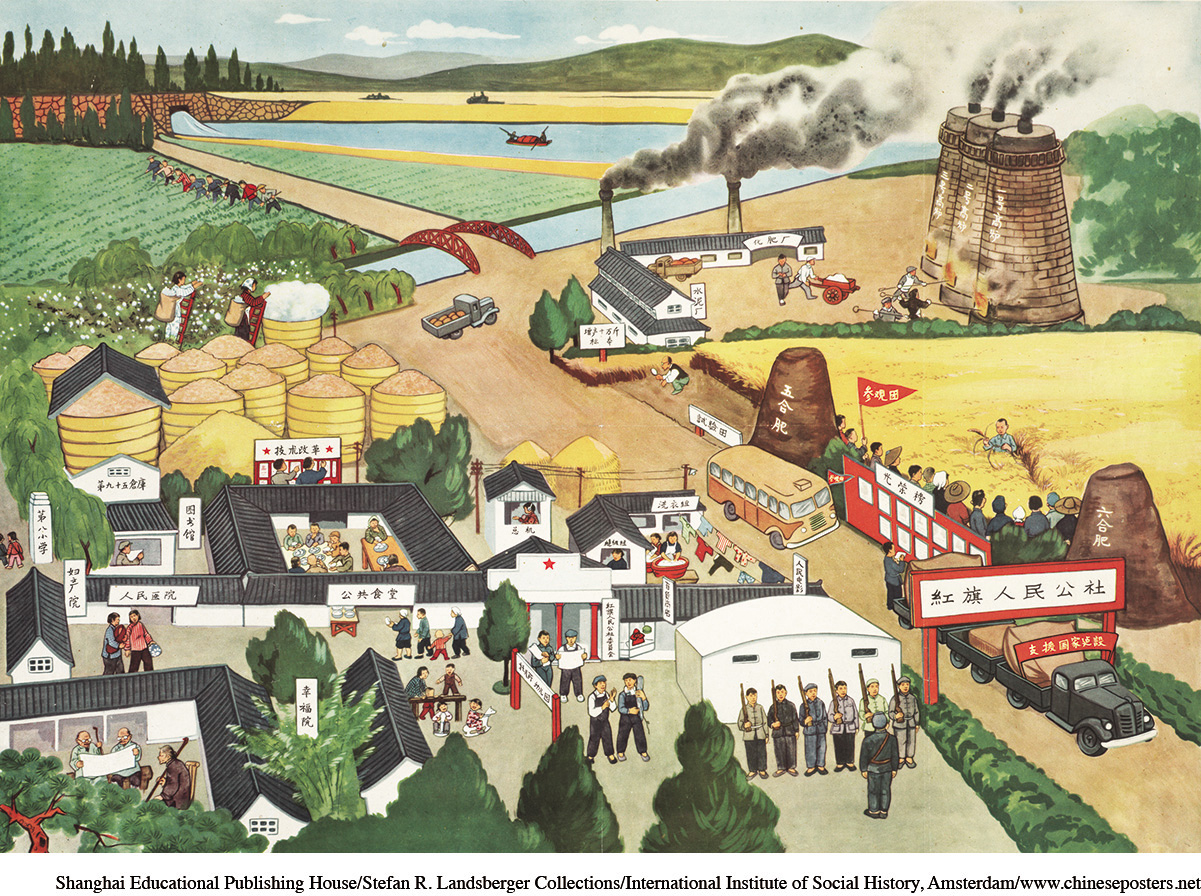Ways of the World with Sources
Printed Page 969
Source 21.2
Building the New Society: The People’s Commune
The centerpiece of Mao’s plans for the vast Chinese countryside lay in the “people’s communes.” Established during the Great Leap Forward in the late 1950s, these were huge political and economic units intended to work the land more efficiently and collectively, to undertake large-
The actual outcomes of the commune movement departed radically from its idealistic goals. Economic disruption occasioned by the creation of communes contributed a great deal to the enormous famines of the late 1950s and early 1960s, in which many millions perished. Furthermore, efforts to involve the peasants in iron and steel production through the creation of much-

- What appealing features of commune life and a communist future are illustrated in this poster and the celebratory poster in the text? Notice the communal facilities for eating and washing clothes as well as the drill practice of a “people’s militia” unit at the bottom of Source 21.2.
- One of Mao’s chief goals was to overcome the sharp division between industrial cities and the agricultural countryside. How is this effort illustrated in these posters?